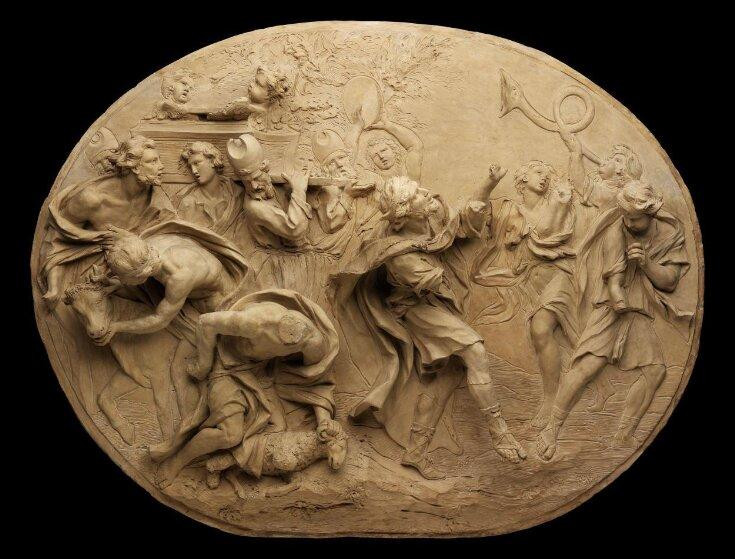In Christian culture, phrases and sayings often emerge from a blend of biblical teachings, traditions, and societal norms. One such saying, particularly within certain Christian circles, is “dancing without leaving room for Jesus.” You won’t find this exact phrase in scripture, Psalms, or any formal liturgy. Yet, it’s a saying that carries significant weight and sparks curiosity. So, what does it really mean when someone talks about “dancing without leaving room for Jesus”? This article delves into the meaning, origins, and modern interpretations of this intriguing phrase, exploring its connection to Christian values and its evolution in contemporary culture.
Understanding “Leave Room for Jesus” and the Concept of Purity
When someone remarks that a couple is “dancing without leaving room for Jesus,” they’re usually implying that the pair is dancing very closely, leaving little to no space between them. The unwritten rule within certain Christian communities suggests that couples should maintain enough physical distance to theoretically fit another person between them. This hypothetical “extra person” is meant to be Jesus. The underlying idea is that if a couple maintains this physical space, with the symbolic presence of Jesus, they are less likely to engage in behavior that might be considered inappropriate or overly intimate.
This concept is deeply rooted in the Christian value of physical purity. Purity, in a Christian context, encompasses various aspects, but the Bible frequently emphasizes sexual purity as a way to honor God with our bodies. The Apostle Paul, in 1 Corinthians 6:18-20, strongly advises, “Flee from sexual immorality! Every other sin a person commits is outside the body, but the sexually immoral person sins against his own body. Or do you not know that your body is a temple of the Holy Spirit within you, whom you have from God? You are not your own, for you were bought with a price. So glorify God in your body.”
Interpretations of “sexual immorality” vary. However, traditional Christian teachings often define sex as being exclusively within the confines of marriage. Premarital sex is generally considered a sin. Therefore, excessive physical closeness, even in a context like dancing, could be seen as a step towards inappropriate touching and potentially sexual immorality. This is why the “leave room for Jesus” principle extends beyond just dance partners. You might hear variations of the phrase applied in various social situations:
- Leave room for Jesus.
- Save room for Jesus.
- Make room for Jesus.
Whether it’s sitting together on a couch, sharing a booth at a restaurant, or even just being alone at home, the advice to “leave room for Jesus” is intended as a preventative measure against temptation. The idea is that physical space reduces the opportunity for premature intimacy. By symbolically including Jesus in their interactions, couples are encouraged to be mindful and perhaps reconsider escalating physical affection too quickly.
Of course, not all physical contact is inherently sinful, and not every dance will inevitably lead to sin. However, for Christians who prioritize purity, dancing, particularly close dancing, can be perceived as a potentially risky activity.
 Couple dancing closely in a social setting
Couple dancing closely in a social setting
Alt text: A couple is engaged in a close dance at a social gathering, highlighting the context where the phrase ‘dancing without leaving room for Jesus’ might be applied.
Tracing the Origins of “Dancing Without Leaving Room for Jesus”
Dance, in its essence, can be a very sensual and expressive art form. In the animal kingdom, dance is often observed as a crucial part of courtship rituals, as seen in this study on animal courtship dances. For humans too, dance can be a tool for attraction and seduction, but it also serves as a harmless and enjoyable social activity. This duality – the potential for both innocent fun and sensual expression – is where the hesitation around dance arises for many Christians. The phrase “leave room for Jesus” likely emerged as a way to establish clear and healthy boundaries for believers navigating these complexities.
The precise historical origins of “danced without leaving room for Jesus” are not well documented. However, the concept of purity and maintaining modesty is prevalent across many religions, so the development of such a phrase to communicate expectations around purity is not surprising.
It’s plausible that the phrase gained popularity during one of the sexual revolutions of the 20th century. Periods of increased acceptance of promiscuity, such as the 1920s, 1960s, and 1990s, often spurred conservative reactions. During these times, conservative Christian communities sought to protect their youth from what they perceived as the declining moral standards prevalent in dance halls and broader societal attitudes toward human sexuality.
These cultural shifts led to the rise of various purity movements and programs, including purity pledges, purity rings, and purity balls, particularly in the 1990s. The coining and popularization of “leave room for Jesus” was likely one of the informal strategies that developed during these eras to reinforce purity standards within Christian communities.
Modern Interpretations and Uses of “Leave Room for Jesus”
Today, while you might still hear people say “They danced without leaving room for Jesus” or “Save room for Jesus,” the context has often shifted. It’s less frequently used as a strict admonishment for maintaining physical purity and more often employed satirically or humorously.
The phrase has permeated modern culture in various forms. It’s been referenced in popular television shows, such as an episode of the ABC hit series Black-ish (Black-ish Twitter reference). It has also become a popular internet meme (Know Your Meme – Leave Room for Jesus Meme), often used in jest to describe situations where people are in close proximity. Even the movie Footloose, while not directly using the phrase, captures the sentiment of a conservative community concerned about dance corrupting moral values.
Interestingly, in recent times, churches have creatively repurposed “leave room for Jesus” to promote social distancing. During the COVID-19 pandemic, some congregations used posters and announcements with the phrase to lightheartedly encourage members to maintain physical distance to slow the spread of the virus.
Furthermore, the variation “make space for Jesus” is evolving to encourage individuals to intentionally create room for Jesus’s influence in their lives. In today’s fast-paced and distraction-filled world, reminding believers to make space for Jesus in their daily routines and thoughts carries a significant and relevant message.
Dancing in the Bible: Examples of Praise and Caution
Dancing is a recurring theme throughout the Bible, deeply embedded in Hebrew culture. It served as a vital form of worship, praise, and celebration of festivals and victories.
Biblical Figures Who Danced for God
Miriam, Moses’s sister, led women in dance and song to celebrate God’s miraculous parting of the Red Sea: “Then Miriam the prophetess, Aaron’s sister, took a timbrel in her hand, and all the women followed her, with timbrels and dancing.” (Exodus 15:20 NIV).
After David’s triumph over Goliath, women came out dancing and singing to greet him and King Saul: “When David was returning after striking down the Philistine, the women came out from all the towns of Israel to meet King Saul with singing and dancing, with joyful songs and with timbrels and lyres. As they danced, they sang: ‘Saul has slain his thousands, and David his tens of thousands.’” (1 Samuel 18:6-7 NIV).
 King David dancing with joy and abandon before the Ark of the Covenant
King David dancing with joy and abandon before the Ark of the Covenant
Alt text: King David, wearing a linen ephod, dances with unrestrained joy before the Ark of the Covenant as it is brought into Jerusalem, illustrating a biblical example of celebratory dance for God.
King David famously danced with great enthusiasm before the Lord when the Ark of the Covenant was returned to Israel. His wife Michal, however, was embarrassed by his exuberant display: “And David danced before the Lord with all his might. And David was wearing a linen ephod. So David and all the house of Israel brought up the ark of the Lord with shouting and with the sound of the horn. As the ark of the Lord came into the city of David, Michal the daughter of Saul looked out of the window and saw King David leaping and dancing before the Lord, and she despised him in her heart. And they brought in the ark of the Lord and set it in its place, inside the tent that David had pitched for it. And David offered burnt offerings and peace offerings before the Lord.” (2 Samuel 6:14-17 ESV).
The prophet Jeremiah also spoke of dance as a form of joyful praise for God’s restoration: “Again I will rebuild you and you will be rebuilt, O Virgin Israel! Again you will take up your timbrels and go out to dance with the joyful.” (Jeremiah 31:4 NIV). And further, “Then young women will dance and rejoice, young men and old as well. I will turn their mourning into gladness; I will give them comfort and joy instead of sorrow.” (Jeremiah 31:13 NIV).
The Bible even directly encourages dance in certain contexts. Ecclesiastes 3:1,4 (NIV) states, “There is a time for everything, and a season for every activity under the heavens: … a time to weep and a time to laugh, a time to mourn and a time to dance.”
Several Psalms also highlight the spiritual value of dance: “Let them praise his name with dancing and make music to him with timbrel and harp.” (Psalm 149:3 NIV) and “Praise him with timbrel and dancing; praise him with the strings and pipe!” (Psalm 150:4 NIV).
Sinful Dancing in Biblical Narratives
However, the Bible also presents negative examples of dancing. The Israelites, after leaving Egypt, engaged in idolatrous dancing around the golden calf: “When Moses approached the camp and saw the calf and the dancing, his anger burned and he threw the tablets out of his hands, breaking them to pieces at the foot of the mountain.” (Exodus 32:19 NIV).
 People dancing around a golden calf in an act of idolatry
People dancing around a golden calf in an act of idolatry
Alt text: A depiction of the Israelites dancing wildly around the golden calf, illustrating a negative example of dance associated with idolatry in the Bible.
Another instance of idolatrous dance is found on Mount Carmel. Elijah challenged the prophets of Baal to a contest, and they danced around their altar in an attempt to invoke Baal: “So they took the bull given them and prepared it. Then they called on the name of Baal from morning till noon. ‘Baal, answer us!’ they shouted. But there was no response; no one answered. And they danced around the altar they had made.” (1 Kings 18:26 NIV).
The story of Herod and John the Baptist also presents a dark side of dance. Herod was so captivated by Herodias’s daughter’s dance that he rashly promised her anything, leading to the beheading of John the Baptist: “When his daughter Herodias came in and danced, she pleased Herod and his dinner guests. The king said to the girl, ‘Ask me for anything you want, and I’ll give it to you.’ …She went out and said to her mother, ‘What should I ask for?’ ‘The head of John the Baptist,’ she answered. At once the girl hurried in to the king with the request: ‘I want you to give me John the Baptist’s head on a platter right now.’” (Mark 6:22, 24-25 NIV).
These examples demonstrate that dance, in itself, is not inherently good or bad in the biblical context. It can be used to glorify God or to offend Him. Discernment is essential in understanding how dance fits into a Christian life.
Did Jesus Himself Dance?
Jesus serves as the ultimate role model for Christian living. Looking to his example is crucial. So, did Jesus dance? The Bible offers no direct account of Jesus dancing, or not dancing. However, Jesus was Jewish, and dance was an integral part of Jewish culture. It’s highly probable that he participated in celebratory dances appropriate to his cultural context. Notably, Jesus attended a wedding in Cana, where he performed his first miracle (John 2). Jewish weddings were joyous, extended celebrations, typically involving customary dances. It’s reasonable to assume Jesus would have participated in these traditions.
Jesus even makes a casual reference to dancing when addressing his generation: “To what, then, can I compare the people of this generation? What are they like? They are like children sitting in the marketplace and calling out to each other: ‘We played the pipe for you, and you did not dance; we sang a dirge, and you did not weep.’” (Luke 7:31–32 NIV).
In this passage, Jesus uses an analogy that would resonate with his audience. He assumes they understand that joyful music calls for dancing, demonstrating an acceptance of dance as a natural expression of joy.
 A person dancing in a worshipful and expressive manner
A person dancing in a worshipful and expressive manner
Alt text: An individual is shown dancing expressively in a worshipful setting, suggesting a positive and spiritual interpretation of dance within a Christian context.
Dancing for Christ: Honoring God in All We Do
The way Jesus might have danced likely differed from contemporary dance styles. Historically, Jewish rabbis discouraged mixed-gender dancing for centuries, as noted in this article about mixed dancing in Judaism. Scrutiny regarding physical intimacy between men and women was very strict during Jesus’s time. So, while Jesus likely danced, it would have been within culturally appropriate and modest boundaries. What does this tell us about “dancing without leaving room for Jesus”? It suggests that there is a way to dance that honors God.
1 Corinthians 10:31 provides a valuable principle for Christians: “So whether you eat or drink or whatever you do, do it all for the glory of God.” Unmarried men and women can dance without compromising their commitment to sexual purity. “Leaving room for Jesus” doesn’t need to be a literal measurement of physical distance between dance partners. Rather, it’s about ensuring we make space for Jesus in every aspect of our lives. It’s about submitting to the guidance of the Holy Spirit and asking, “Does this action honor God?” If the answer is yes, then you can confidently dance for Christ, in a way that is both joyful and honoring to Him.

